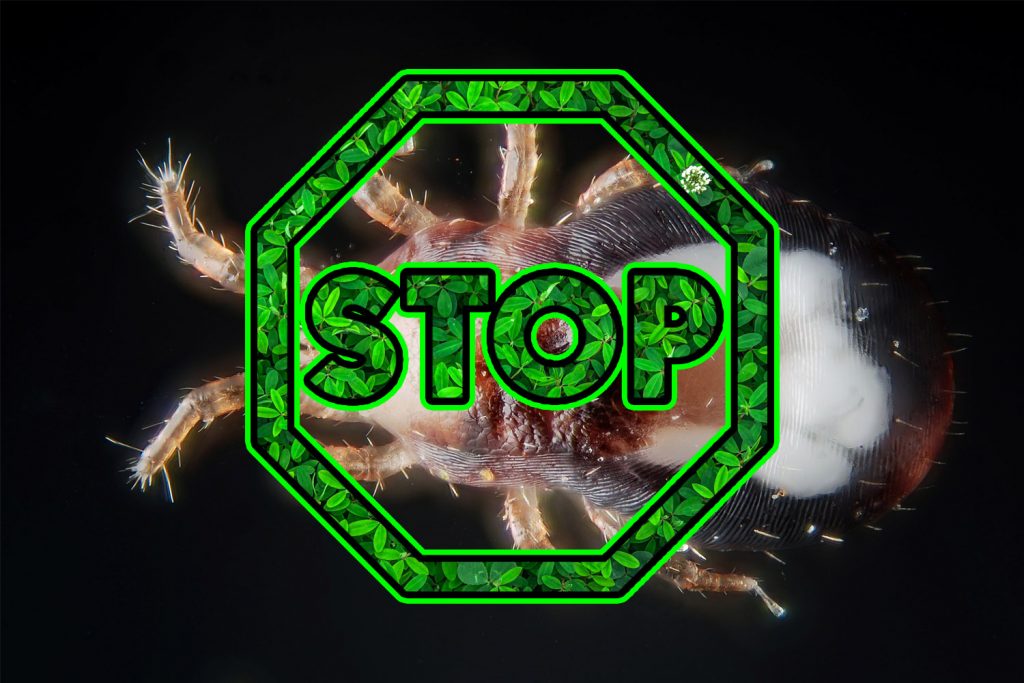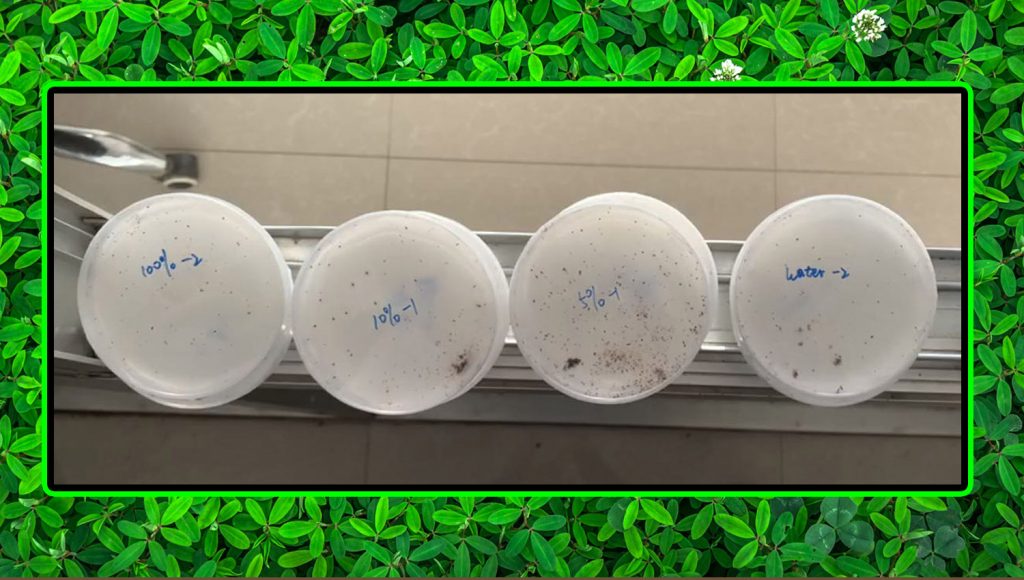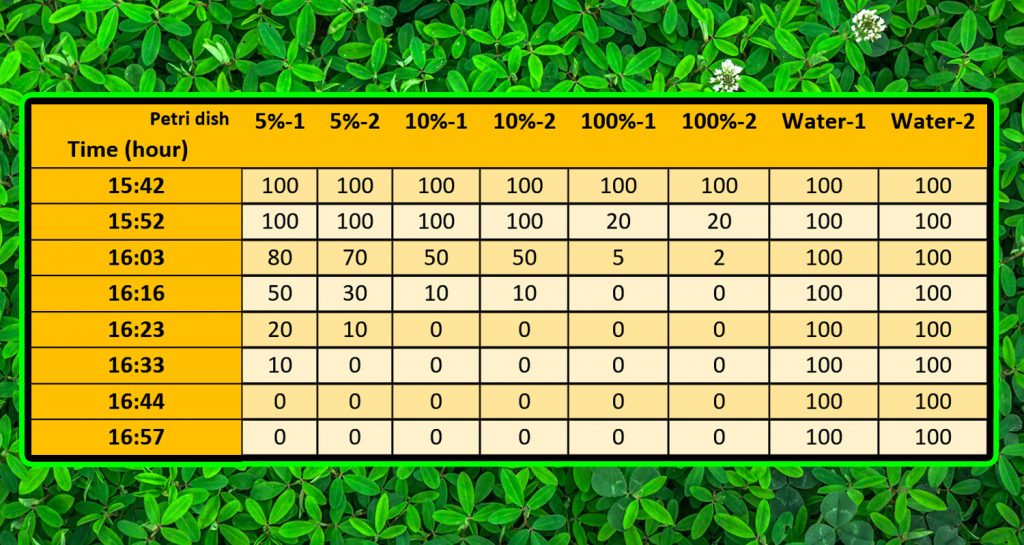05 Jun “In vitro” effectiveness of PhytoErad© against red mites

Infestation by red mites
Dermanyssus gallinae (also known as red mite or poultry mite) is an ectoparasite of poultry that feeds on the blood of the animal. It causes itching, general discomfort, stress, anemia, fatigue, feather pecking, cannibalism and sometimes death. In laying hens, it worsens feed conversion, reduces the laying rate and impairs egg quality (eggs show pale yolks and fragile shells; eggs may be covered by mites or blood stains).
More than 70% of layers housed in traditional cages are affected by infestations of red mites, a problem that worsens during the warm season (when the temperature is more than 25ºC).
Red mites are vectors of diseases such as Newcastle Disease, Fowl Cholera and Salmonellosis. On the other hand, these parasites may bite the workers of the farm and cause dermatitis.
The losses caused by red mites in the European Union are 130 million euro/year.
The traditional treatment is based on the use of chemical acaricides, but they can leave toxic residues in the eggs, birds and workers. Moreover, the resistance to chemical acaricides is increasing rapidly and many chemical acaricides need a withdrawal period that ranges between 12 hours and 14 days, depending on if they are used on broilers or layers.
Essential oils to fight infestations by red mites
Medicinal plants have been used traditionally as insecticides from the beginning of civilization. It is believed that the Chinese crushed chrysanthemum plants and used the powder as an insecticide as early as 1000 B.C.
In the past decades, the acaricide and insecticide efficacy of many plant extracts and essential oils has been scientifically proven. Their effect is often attributed to the major component of the extracts, but there is evidence that the different compounds present in the extract work together in synergy.
Using essential oils to prevent and fight infestations by red mites is eco-friendly, helps to fulfill regulatory and consumer’s demands of food safety, protects the health of the workers of the farm and contributes to obtain a premium price for meat and eggs. Furthermore, products based on essential oils do not develop resistances and do not generate residues.
Essential oils are effective against red mites through four complementary mechanisms of action:
- Toxicity by direct contact: certain phytochemicals inhibit the arthropod acetylcholinesterase, an enzyme necessary for neurotransmission.
- Ovicidal activity: certain essential oils prevent the hatching of the eggs.
- Mechanical effects: essential oils disrupt the cuticular waxes that protect the mite and also block the spiracles. Spiracles are the openings in the exoskeleton of the insects that allow the entry of air to the trachea.
- Repellent effect: red mites are very sensitive to temperature changes and to smells. When essential oils are given through drinking water and arrive to the digestive system of the bird, they in are absorbed into blood and later excreted by the preen gland, together with the oil that this gland secretes naturally. When the bird rubs its beak and head against the gland, the essential oils and the preen oil are distributed all along the feathers of the body and wings. As a result, the smell of the essential oils repels the mites, that abandon the body of the birds.
“In vitro” trial of PhytoErad©
Trial Site: Farm with one million laying hens, suffering from mites infestation at the peak of egg production.
Date: April, 2020
Purpose: To verify the “in vitro· effectiveness of the product based on essential oils PhytoErad©.
Procedure
- Prepare 8 dry sterile Petri dishes, cut pieces of filter paper to the same size as the bottom of the Petri dish, and place them on the bottom of each dish.
- Dilute PhytoErad© with water to 5% and 10%.
- Add 1 ml of each the diluted solutions to two Petri dishes. The filter paper must become completely wet with the solution.
- Two Petri Dishes containing filter paper wetted with 1 ml of pure PhytoErad© act as a positive control group. Two Petri Dishes containing filter paper wetted with 1 ml of water act as a negative control group.
- Petri dishes are labelled as 5%, 10%, 100%, water.
- All the Petri dishes are wrapped and sealed with plastic film to prevent volatilization of the essential oils.
- The Petri dishes are brought to the farm, the plastic seal is removed, and approximately the same number and size of mites are put inside each dish.
- All the Petri dishes are wrapped and sealed again with plastic film.
- Observe and record the number of active mites (animals that are moving) in each group every 10 minutes.

Results – Number of active mites

Note: The mites are constantly moving in the Petri dishes, and the experiment takes place in a farm, so the above data is a rough count.
It can be seen from the table above that a 5% PhytoErad© can kill all mites in the two Petri dishes within 1 hour, and a 10% PhytoErad© solution can kill all mites in the two Petri dishes within 40 minutes.
Conclusion
The “in vitro” effectiveness of PhytoErad© was confirmed by this experiment, corroborating its efficacy against red mites.
Product of choice
PhytoErad© es una solución oral a base de aceites esenciales, para añadir al agua de bebida.
PhytoErad© es una forma efectiva, segura y natural de prevenir la infestación por insectos y ácaros, evitando el uso de insecticidas que pueden generar residuos en la carne y los huevos.
Picture of the red mite found here. Stop icon found here. Plant vector found here.

Certain health statements may not be applicable in your region.

